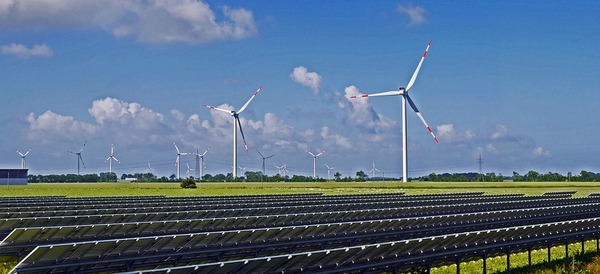News Release from windfair.net
Wind Industry Profile of
U.S. Government Underestimates Economical Benefits of Wind Energy
A study by Purdue University, Indiana, shows the economic effects of increased wind production in ten states and beyond: "While the impacts are directly felt in the state experiencing the increase in economic activities due to installation of new wind energy generation capacity, the positive economic effects also spill over,” the authors around Shweta Singh wrote.
The analysis simulates the impact of an additional 500 megawatts in each of the ten U.S. states with the largest wind power capacity: Texas, Iowa, Oklahoma, California, Kansas, Illinois, Minnesota, Oregon, Washington and Colorado. The result is nearly $24 billion in economic impact in these states, and another $3 billion in the rest of the US.
The sectors with the greatest economic benefits would be manufacturing, construction, finance and insurance, transportation and storage, and public administration. "We are so dependent on coal energy because the infrastructure has been built and it’s so cheap," Singh said. "But this study shows that there is significant economic opportunity from increasing wind energy production, as well as spillover that touches every state and many employment sectors along with long-term impact on reducing greenhouse gas emissions."

Renewable energy offers great economic opportunities (Picture: Pixabay)
So it's no wonder that U.S. state governments are taking their own measures to combat climate change and build a clean energy economy - no matter what Trump says in Washington. Especially at the local and regional level, the renewable energy industry is one of the fastest growing sectors of the U.S. economy, as the Center for American Progress, a Washington-based think tank, also points out. This industry now employs approximately 3.3 million American workers - more than are still employed in the fossil fuel industries.
However, the efforts made so far could be thwarted by the corona crisis. Many states are facing high levels of debt due to large aid packages, which could jeopardize or make future investments impossible. Now would therefore be the right time to pave the way out of the crisis into a green future at federal level as well.
The states, in comparison to the federal government, are restricted in their investment powers, e.g. by the constitutional requirements for balanced budgets. The states lack the power to provide the large-scale economic stimulus needed to mitigate the effects of the pandemic. It's the federal government that must now provide resources to maintain and expand the success achieved at federal level in the clean energy, infrastructure and nature conservation sectors.
So far, however, it does not look like Donald Trump will discover his green heart - despite the enormous economic benefits.
- Author:
- Katrin Radtke
- Email:
- press@windfair.net
- Keywords:
- USA, economy, effect, wind energy, job, federal state, Washington, Donald, Trump, fossil, benefits








